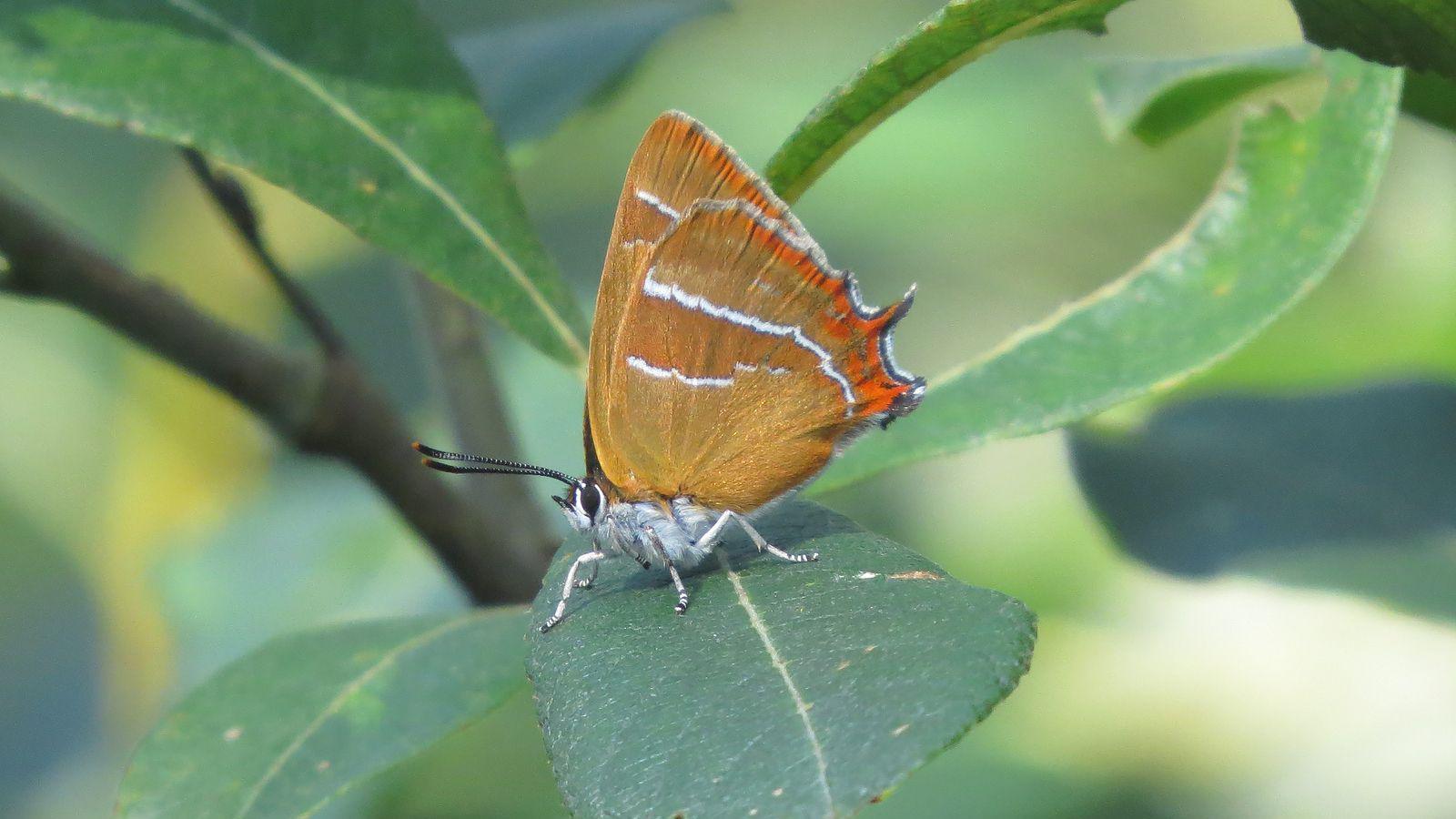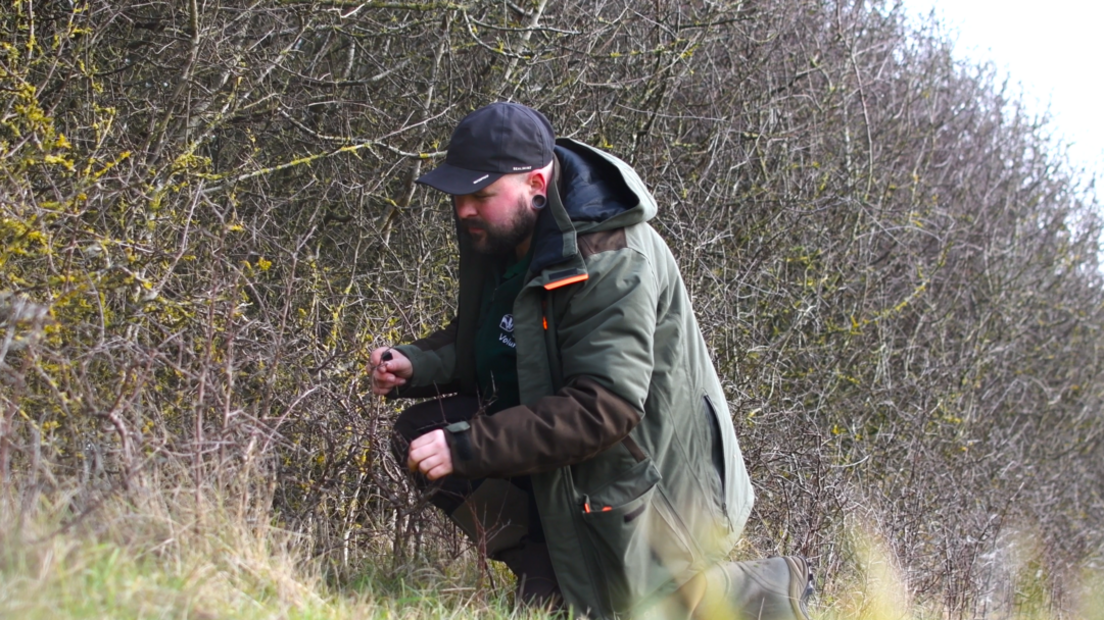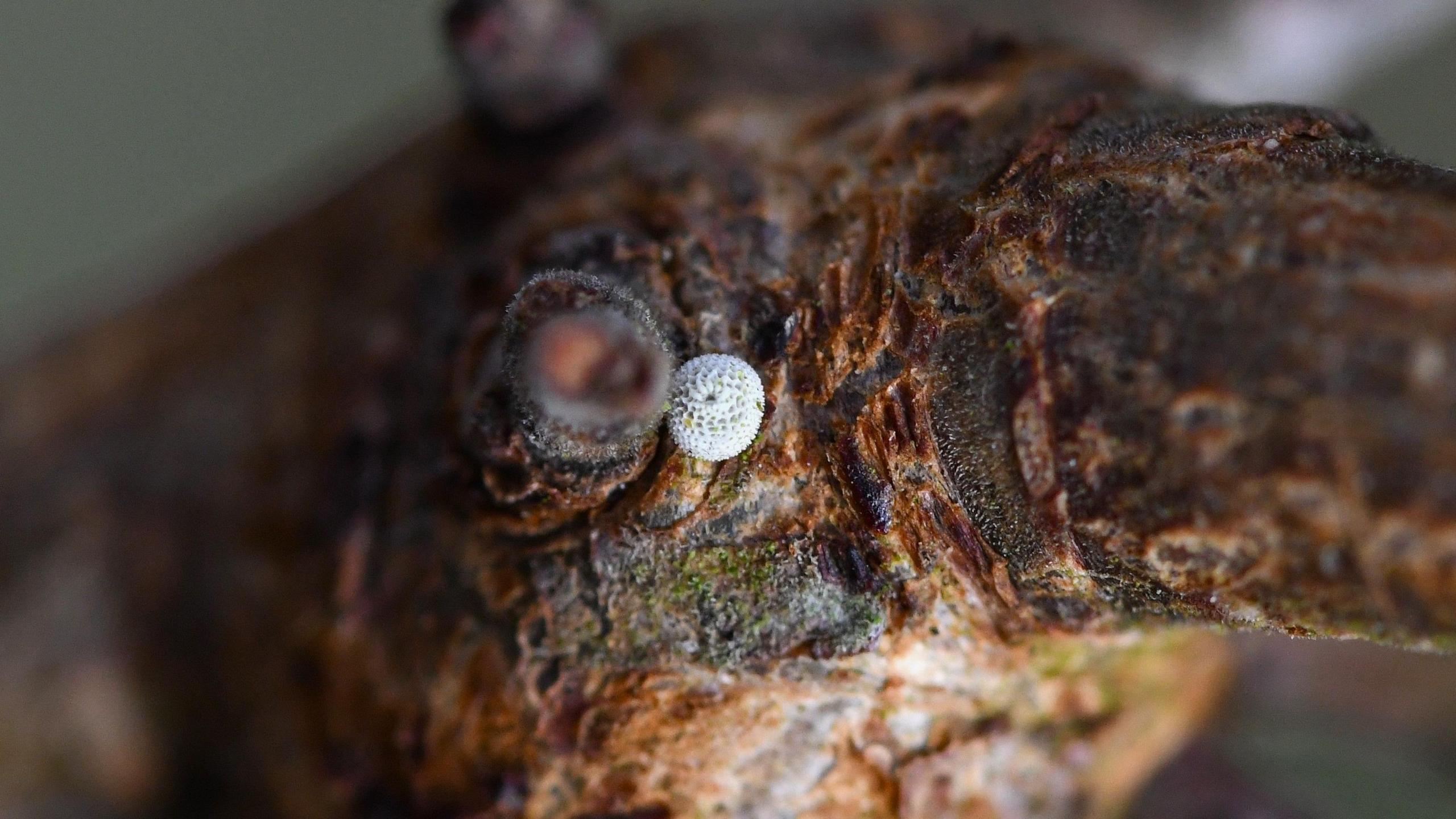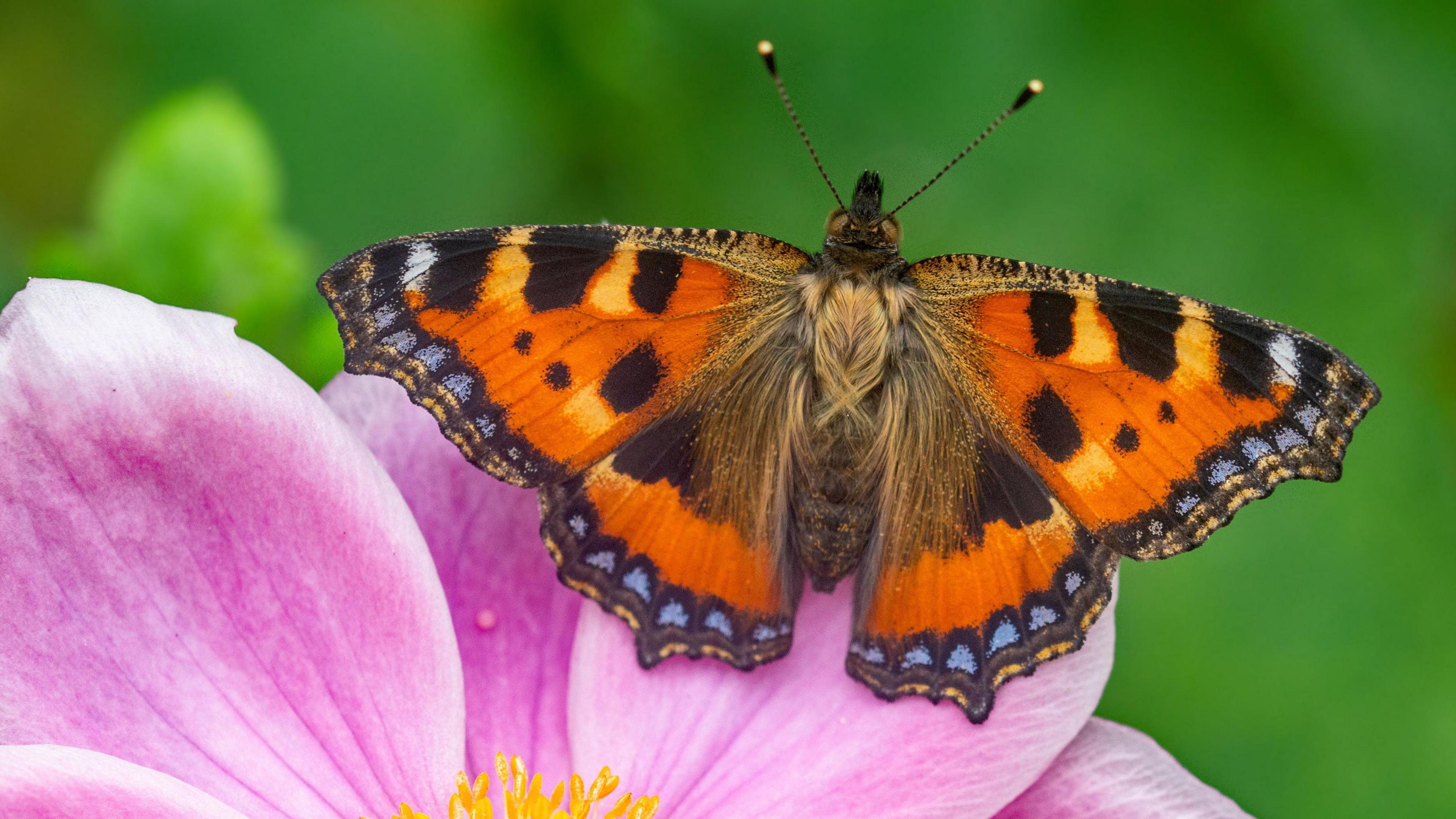Egg count for rare butterfly sees 'positive result'

Brown hairstreaks are found in select areas across the south of Britain
- Published
The number of rare butterflies found on a nature reserve remains stable despite increasing climate and habitat threats, a wildlife trust has found.
A team of volunteers from Berkshire, Buckinghamshire and Oxfordshire Wildlife Trust (BBOWT) recently counted the number of brown hairstreak butterfly eggs at Asham Meads in Oxfordshire.
The species is found in select areas across the south of Britain and is classified as vulnerable due to declining numbers from habitat loss.
Colin Williams, from BBOWT, said the discovery of 43 eggs - an increase of 33% on 2022 - was a "positive result".
Brown hairstreak butterflies spend much of their adult life hidden high in hedgerow treetops - meaning the best way to monitor their numbers are through winter egg counts.
The white eggs, which are just one millimetre wide, are found in blackthorn hedgerows.

Volunteers from BBOWT conducted the count at Asham Meads nature reserve
Mr Williams, who is BBOWT's senior ecologist, said the count was "only possible" because of the trust's "fantastic army of volunteers".
"Searching hedgerows for an egg the size of a pinhead is not something you want to do on your own," he said.
BBOWT said it put the good result at this year's count down to the "excellent work of its staff and volunteers creating and maintaining important wildlife habitat on its nature reserves".

The eggs are just one millimetre wide
Last year, the charity Butterfly Conservation declared a national "butterfly emergency" after its annual count recorded its lowest ever numbers.
Data from the UK Butterfly Monitoring Scheme, external showed yearly fluctuations in butterfly numbers in response to weather conditions amid a long-term picture of decline driven by climate change, habitat loss, pollution and pesticides.
"With 2024 being an alarming year for our British butterflies, this positive result is a fantastic endorsement for the way we manage our nature reserves," Mr Williams added.
Get in touch
Do you have a story BBC Oxfordshire should cover?
You can follow BBC Oxfordshire on Facebook, external, X, external, or Instagram, external.
Related topics
- Published18 September 2024
